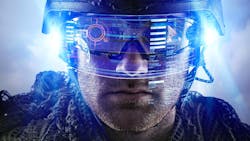Experts at Army Futures Command seek to improve technology forecasting to determine electronics priorities
AUSTIN, Texas – An eight-month-old team at U.S. Army Futures Command in Austin, Texas, is putting a 21st-century spin on a Cold War idea: employing scientists and watchers to forecast technology trends and help prepare for war in coming decades. Defense One reports. Continue reading original article
The Military & Aerospace Electronics take:
9 July 2020 -- Like Herman Kahn at RAND in the 1940s, Team Ignite scans the technological horizon for upcoming advances in electronics, artificial intelligence, space, biotech, and more. Its forecasts, informed by data and machine learning, are intended to help the Army arm, organize, and train itself for conflicts around 2040 to 2050.
Rather, the role of the scientists is to survey the tech landscape, see how some breakthroughs will lead to others, and then create scenarios and concepts for how those technologies will shape not just what the Army does but what adversaries might do as well.
The job of technology forecasting has changed dramatically over the past few decades, thanks largely to the exponential growth of computing power. For example, a recent paper from the Northwestern University Institute on Complex Systems describes how artificial intelligence can help predict which new scientific studies will be most reproducible.
Related: Top enabling technologies for the warfighter in the 2020s
Related: The new era of high-power electromagnetic weapons
Related: How military harvests technology from commercial industry
John Keller, chief editor
Military & Aerospace Electronics
